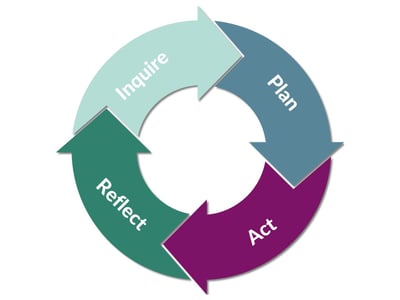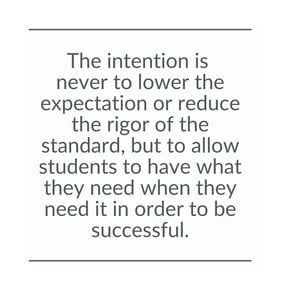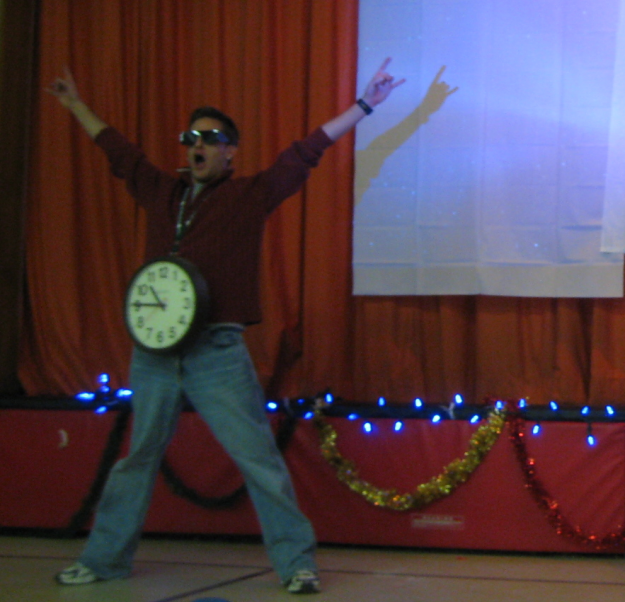Quite some years ago I remember hearing this wise old saying,
The best time to plant an oak tree was 20 years ago. The second-best time is right now.
The implication of these words is not lost on us when thinking about Universal Design for Learning (UDL).
When considering the evolution of teaching and learning and the transformative power of UDL in creating equitable, high-quality learning experiences for all students, for sure, it would’ve been great to have begun the UDL implementation journey years ago!
For those perhaps who have not yet started, the thought of taking this on now within the context of our current times and the myriad of challenges and complexities of education in the modern world, well, it may seem daunting.
Fundamental improvements in education happen by design, not by accident.
UDL is a way of simultaneously making things better for students and in the long run, easier for educators. If not earlier, what better time to begin with UDL than right now!?
UDL is an iterative and reflective process of continual improvement over time (check out this video from Simon Sinek on why small consistent changes are so powerful!), and one of the best things about UDL is that you don’t have to change everything all at once. Individual educators interested in realizing the benefits of UDL can begin at any time, identifying and making intentional and incremental changes within their classrooms and curriculum (goals, methods, materials, assessments) to improve equity and help support all students to thrive and succeed. In seeking out and finding like-minded colleagues, together or in small groups, educators can work collaboratively and learn more and progress even further with UDL. When working to improve equitable learning opportunities and experiences for all students, front-line educators need not be alone.
Educational districts and systems keen on UDL also have a responsibility and a role to play in supporting the implementation of UDL and in supporting educators as they move forward with UDL in their schools and classrooms.
In Katie Novak and Mike Woodlock’s UDL Playbook for School and District Leaders, they highlight the importance of having a conceptual framework.
Charles Kivunja (2018) describes this as a “total, logical orientation… of anything and everything that forms the underlying thinking, structures, plans and practices and implementation”. A conceptual framework is “metacognitive, reflective, and operational.” “It informs your learning process as a UDL practitioner.”
Finding ways of making things simpler, easier to understand, and therefore easier to take action with UDL is a must! It is important to demonstrate that UDL is not an “add-on,” it is not something separate or distinct, and it is not simply the next thing for educators to contend with - it is interconnected.
In the sciences, when new and important discoveries are made, these discoveries are often not radically displacing what came before and are not isolated. Rather, they are connected and interrelated.
School and System leadership need to make clear this interrelatedness with UDL.
Build a Clear Vision for Student Success
An effective approach to clarify the interrelatedness of UDL to other practices is to identify seemingly disparate initiatives and priorities and demonstrate through the development of a clear and coherent vision and theory of action how UDL aligns with other current best pedagogical practices and familiar and known processes and practices within your district.

In the Hastings and Prince Edward District School Board (HPE) in Ontario, Canada, we are currently working on and have in development a ‘UDL Educator Process’ model. The idea is to make clear UDL’s connections to the Professional Learning Cycle (image at right), Professional Learning Communities (PLCs), Multi-Tiered System of Supports (MTSS), and Data-Based Instructional Decision Making.
There are many different models for professional learning, some with different steps or titles, but overall, the process is the same; Inquire →Plan→Act→Reflect.
Facilitate Collaboration and Collective Efficacy
When engaged in professional learning, an openness and willingness to share and learn from others is critical to the success of any school or district. Professional Learning Communities (PLCs) facilitate a collaborative approach to professional learning where groups of educators meet regularly to reflect on and share information on instructional approaches and practices. Here, educators benefit from one another’s knowledge, experiences, and collaborative problem-solving. The cyclical nature of the Professional Learning model (Inquire →Plan→Act→Reflect) and PLC’s focus on data-based instructional decision-making align and connect perfectly with UDL.
When participating in PLCs, educators typically focus on 4 key questions:
- What do we want all students to know and be able to do?
- How will we know if they learn it?
- How will we respond when some students do not learn?
- How will we extend the learning for some students who are already proficient?
A revision to these Key Questions with more of a focus on UDL is:
- What do we expect our students to learn, and why is it important?
- How can we design flexible assessments, so students have multiple options to demonstrate their learning?
- If students do not learn, what potential barriers can we eliminate through thoughtful design?
- If students do learn, how will we provide options and choices to optimize challenge?
In our school district (HPE), as a part of our Board Improvement and Equity Plan for Student Achievement and Well-Being, we have developed "Improvement Actions – 5 Guiding Questions" that align with UDL.
- Who are our students as learners?
- What do we want them to be able to know and do?
- How will we program to promote student learning?
- How will we know if students are progressing and achieving?
- What will we do for those that continue to struggle?
Position UDL as the Foundation of Something Bigger…
There is also fundamental alignment between the processes of Multi-Tiered Systems of Support (MTSS) and UDL.
MTSS is a 3-tiered approach that provides a structure for effective instruction, assessment, and support for all students at all levels (universal, focused, intensive). When planning, from the outset, Tier 1 is the foundation of the general education or regular classroom. All learners should have access to instruction through Tier 1 and the best way to do that is with UDL! This is where all educators begin, with their best efforts given their current knowledge and experience with UDL.
As real-time, context-dependent, individual learner variability information emerges, Tier 2 builds on Tier 1 where some students may receive more focused, differentiated instructional support as needed based on their context and circumstance (subject/content-knowledge/skill specific supports). This instruction doesn’t replace Tier 1 instruction but builds upon it. 
Even further, despite Tier 1 and Tier 2 interventions, some students may continue to struggle. In these instances, there is a need for continuous assessment data to be assembled and more formal data to be gathered to determine if there is, in fact, some deeper learning issue at hand. If so, more intensive Tier 3 supports in the form of specific accommodations may be put in place for students who need them. This may or may not be through the creation of an Individual Education Plan (IEP) or Individual Program Plan (IPP) in which additional modifications may be made to the student’s learning program.
Each of the 3 Tiers build on and are supplemental to one another. Just the same, UDL is complementary.
As this cycle continues, educators’ approach to UDL in their classrooms and curriculum is continually improved and enhanced to the benefit of all students. Some Tier 2 focused interventions, strategies, approaches, and resources may be adopted in the future for universal Tier 1 support. Similarly, there may be some Tier 3 intensive interventions, strategies, approaches, and resources which may be adopted in the future for universal Tier 1 support. The intention is never to lower the expectation or reduce the rigor of the standard, but to allow students to have what they need when they need it in order to be successful. This cycle continually refines educators’ knowledge and experience with Universal Design for Learning as support efforts for individual or small groups of students are potentially incorporated into an approach for everyone.
Good for all, necessary for some!
Moving Forward
UDL is an iterative and reflective process of continual improvement over time that has the transformative power of simultaneously making things better for students and easier for educators. Through the development of a comprehensive and coherent conceptual framework, school and system leadership can help support UDL implementation through demonstrating the interrelatedness of, and by embedding UDL within other priorities and known and familiar best practices and processes.
In much the same way as with not having planted an oak tree many years ago, with UDL, the important thing is not when you start it is that you start, and the best time - is UDL, Now!
Resources:
- Check out the following resources from the Hastings and Prince Edward District School Board (HPE)
- Explore UDL resources
- Deepen your learning, explore Universally Designed online courses
Derek DeLarge has been a school administrator for over 20 years with a range of experience in educational leadership K-12, including work at the system level, leading and managing various projects and initiatives. Currently he is the Principal of Hastings and Prince Edward's Virtual School.



